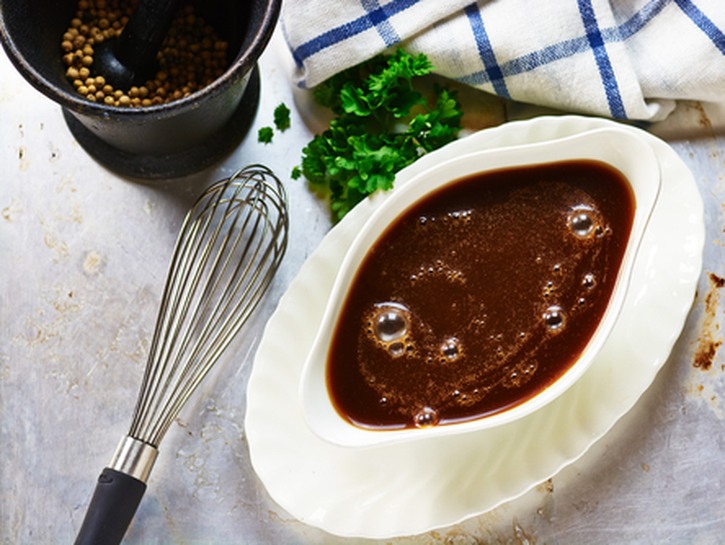Espagnole sauce is one of the French mother sauces and though you’ve probably heard of it before, it can be a little tricky to get just right. Sure, it has a lot of ingredients and takes some finesse, but you don’t need to worry about any kitchen nightmares! You can rest easy with our simple-to-follow recipe and some refreshers for what exactly Espagnole sauce even is!

What Is Espagnole Sauce?
This sauce belongs to the five French mother sauces and differs quite a bit from the rest of them.
Unlike some of the others, Espagnole sauce is very flavorful, made with a dark roux, and rarely served as a finishing sauce due to its potent taste. There are quite a few ingredients that go into it like beef bits from bones and a little something called mirepoix. Mirepoix is a mixture of chopped celery, onions, and carrots. Unlike the other mother sauces, Espagnole sauce uses a lot of potent ingredients that give it a strong taste, which is why it’s rarely used as a finishing sauce.
Though it might take a little more to make, it’s quite simple once you get the hang of it!
What It’s Used For
As we’ve mentioned, this sauce has a very potent taste and it’s rarely served directly on food. It is, however, used as the base for a lot of other sauces that can be drizzled over food. Espagnole sauce acts as the base for a lot of secondary sauces like bordelaise, demi-glace, sauce chasseur, and sauce Africaine.

Espagnole Sauce Recipe
What You’ll Need
- 1 cup chopped onions
- 1/2 cup chopped celery
- 1/2 cup chopped carrots
- 2 1/2 cups of dark beef stock
- 1 ounce of butter
- 1 ounce of flour
- 1 tablespoon of tomato paste
- 2 sprigs of thyme
- 2 sprigs of parsley
- 1 bay leaf
- 6 peppercorns
Steps
- Mix the chopped onion, celery, and carrot into a saucepan over medium heat. Fry them until they turn a golden brown in color. Stir every so often to keep the vegetables from sticking to the pan and burning.
- Add the tomato paste and keep stirring.
- Sprinkle in the flour and stir until it’s dissolved. What you’re doing here is making a dark roux and this will ensure that the sauce will be thick and won’t be lumpy when you add in the stock. Keep stirring the flour until it becomes brown, but don’t let it burn.
- Add your seasoning and gently pour in your beef stock.
- Let everything simmer for about an hour. Check it every so often and remove any foam that may accumulate at the top. You also want to stir to make sure nothing sticks to the bottom of the saucepan.
- Remove from heat.
- If you’re looking to have a smoother consistency then you can strain your sauce through a strainer laced with a piece of cheesecloth.
There you have it! It might seem a little daunting at first, but Espagnole sauce isn’t all that difficult to make once you get the hang of it. Espagnole sauce is a wonderful base sauce so be sure to familiarize yourself with this one to make the best of your additional sauces!
